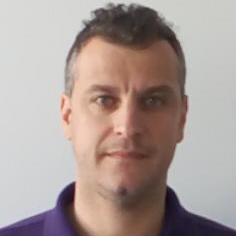Spatial and Spatiotemporal Methods in Marine Science
A special issue of Journal of Marine Science and Engineering (ISSN 2077-1312). This special issue belongs to the section "Geological Oceanography".
Deadline for manuscript submissions: closed (20 March 2022) | Viewed by 4383
Special Issue Editor
Interests: space–time geostatistics; geosciences; stochastic methods; water resources; groundwater
Special Issues, Collections and Topics in MDPI journals
Special Issue Information
Dear Colleagues,
The main goal of spatial statistics has been the development of statistical dependence models that allow optimal prediction and simulation of spatial processes. Spatiotemporal analysis allows identifying and explaining patterns and anomalies which are useful to quantify the dynamic distribution of physical variables and for understanding environmental processes. In recent years there has been an explosion of spatial and spatiotemporal data fueled by technological advances which include remote-sensing capabilities and onshore–offshore sensor networks. This development has motivated new research efforts directed at building novel space–time models for analyzing the emerging datasets.
Dr. Emmanouil Varouchakis
Guest Editor
Manuscript Submission Information
Manuscripts should be submitted online at www.mdpi.com by registering and logging in to this website. Once you are registered, click here to go to the submission form. Manuscripts can be submitted until the deadline. All submissions that pass pre-check are peer-reviewed. Accepted papers will be published continuously in the journal (as soon as accepted) and will be listed together on the special issue website. Research articles, review articles as well as short communications are invited. For planned papers, a title and short abstract (about 100 words) can be sent to the Editorial Office for announcement on this website.
Submitted manuscripts should not have been published previously, nor be under consideration for publication elsewhere (except conference proceedings papers). All manuscripts are thoroughly refereed through a single-blind peer-review process. A guide for authors and other relevant information for submission of manuscripts is available on the Instructions for Authors page. Journal of Marine Science and Engineering is an international peer-reviewed open access monthly journal published by MDPI.
Please visit the Instructions for Authors page before submitting a manuscript. The Article Processing Charge (APC) for publication in this open access journal is 2600 CHF (Swiss Francs). Submitted papers should be well formatted and use good English. Authors may use MDPI's English editing service prior to publication or during author revisions.
Keywords
- Spatiotemporal methods
- Geostatistics
- Machine learning
- Stochastic models
- Wave data analysis
- Coastal management
- Coastal reservoirs (aquifers, hydrocarbons)
- Risk assessment
- Remote sensing and satellite data
- Oil spill monitoring





